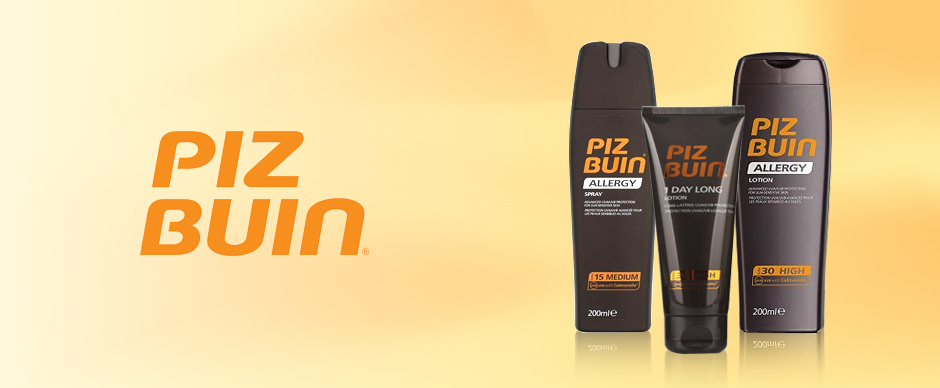
How does sun protection work?
All sun protection products contain a key technology called a UV filter, which enables them to protect our skin from the damaging effects of UV rays like sunburn, premature skin ageing and skin cancer. Sunscreen combines organic and inorganic chemicals to filter light from the sun and prevent it from reaching deeper layers of the skin to cause damage. The UV filter can either be chemical or physical:
- Chemical filter - chemical filters absorb UV light and convert it into higher wavelength rays that are much less harmful to the skin.
- Physical filter - instead of absorbing the UV light, physical filters reflect, transmit or partially absorb the light in order to protect your from most UVA and UVB rays. The most common physical filters include zinc oxide and titanium oxide.
Sun protection now comes in a variety of formats including lotions, gels and sprays to ensure you gain the right protection that suits you. While products like Piz Buin In Sun provide classic sun protection, you can also find products like Piz Buin Tan & Protect that will help to enhance your natural tan while protecting your skin. You can also ensure that more sensitive areas like your lips and face are cared for with face creams and lip balms.
What does SPF mean?
SPF simply stands for Sun Protection Factor and every single sunscreen product will have a specific SPF number displayed on the bottle to determine how much protection it will offer you from UV rays. Generally speaking, the higher the SPF, the greater the protection - SPF10 and below will offer low protection, SPF 15-25 will offer medium protection, SPF 30-50 will offer high protection and SPF 50+ will offer very high protection.
The amount of sun protection you require will depend on a variety of factors like your skin colour before any sun exposure as well as your hair and eye colour. For example very fair skin often burns easily and therefore needs a higher sun protection factor. This is because different skin types react to the sun in different ways and your type of skin can influence how long you can actually stay in the sun. If you are unsure about what SPF your skin would need, always start off with the highest protection and move down to a medium protection if necessary.
Can you decrease your level of SPF?
If you’re away on holiday then it is possible to decrease your level of SPF step-by-step throughout your time in the sun. What a lot of people don’t know is that our skin has its own defence system in the form of the tan. As we are exposed to UV rays, they can cause certain skin cells to produce a pigment called melanin that darkens through oxidation. With enough time in the sun, these cells will come closer to the skin’s surface and produce more melanin in order for the skin to darken, which is the process of tanning. This pigment is then able to absorb ultraviolet radiation and defend penetration further into the skin tissue. Therefore, if you start your holiday off on a high sun protection factor for a few days, you may be able to move down to a medium protection, once you’ve noticed your skin build up its own defence in the form of a suntan.



